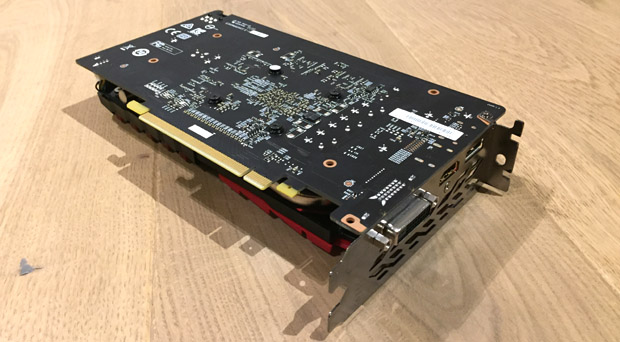Nvidia GeForce GTX 1050Ti review: The best 1080p graphics card under £200
Pretty pixels cost pounds and pence
It's been a pretty bleak couple of months for anyone hoping to buy a new graphics card, but there's still a bit of good news to be found for those whose ambitions stop firmly at getting a great gaming experience at 1920x1080, as entry-level cards like the Nvidia GeForce GTX 1050Ti on test here have been largely unaffected by recent price hikes.
Indeed, the GTX 1050Ti currently occupies the top spot in our guide to the best graphics cards for 1080p gaming, and more importantly can still be found for as little as £150-odd in the UK and a fraction over $200 in the US. That's almost half the cost of Nvidia's next card up, the GTX 1060, which you can read more about in our Nvidia GeForce GTX 1060 review. It won't be much good for anything beyond 1080p, but if Full HD gaming is your bag, then the GTX 1050 Ti is an excellent choice.
To help us see how it performs, we've got MSI's GeForce GTX 1050Ti Gaming X 4GB doing the heavy lifting today. Much like other Ti versions of Nvidia's graphics cards, the GTX 1050Ti shares the same graphics chip and 128-bit memory bus as the regular GTX 1050, but has slightly more cores (768 compared to 640). For context, a GTX 1060 has 1152 cores, while the Nvidia GeForce GTX 1080 rocks 2650 of them.
Critically, the 1050Ti only comes in a 4GB trim, which is arguably the minimum amount of graphics memory you want these days if you are remotely serious about gaming. The normal GTX 1050, by comparison, only comes with 2GB, which doesn't make it very futureproof.
To see how it runs, I jumped straight into Doom running the same Medium-ish (technical term) settings at 1080p that I’d last dabbled with running the RX 460 and, bingo, the result is slick, smooth gaming around the 60 to 70fps mark. In other words, there are a few frames to spare if you wanted to up the image quality a little.
It’s a similar story in The Witcher 3. It’s properly playable at 1080p. Toggle high in the global image quality settings and you lose some of the fluidity, but it’s still eminently playable. Thus, your choice is between quality of visuals and maximizing smoothness and response. The Ultra setting is clearly a step too far, but the overarching point is that you have options and you will find a set up you can live with at 1080p.
Much the same applies to Total War: Attila. It really flies on Medium settings and gives you options for running with more bells and whistles while keeping the frames up at decent levels. It’s really only when zoomed right up close and personal with the troop action that proceedings are less than buttery smooth at 1080p.
With all that in mind, it’s no surprise that Shadow of Mordor, which is a fairly undemanding in terms of graphics, zips along sweetly even at Ultra image quality settings. That in turn means that the 1050Ti is much more what I was hoping for from this generation of entry-level cards. It’s a graphics card you could absolutely live with as a proper gaming solution for a 1080p screen and even has a little headroom to spare for the inevitable uptick in demand from future games, albeit you won’t be playing them at anything like maximum detail.
There's always a hope that things might be cheaper, but when its big brother, the GTX 1060, is still suffering from such a prolonged period of price inflation, the GTX 1050Ti is about as good as it's going to get for under £200/$200.











